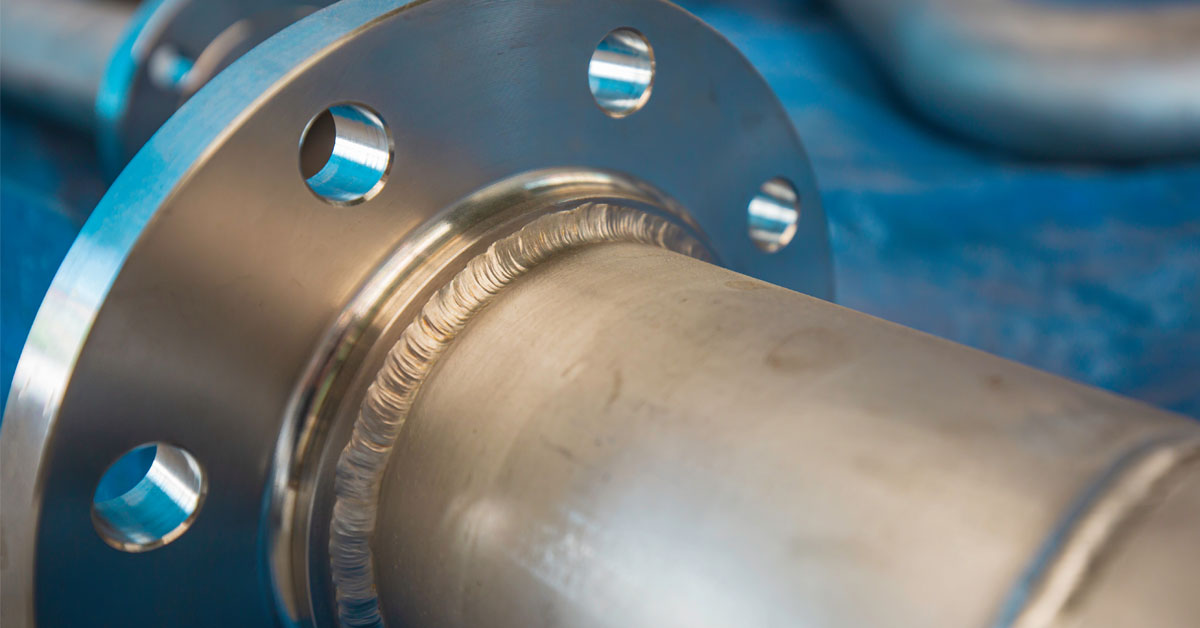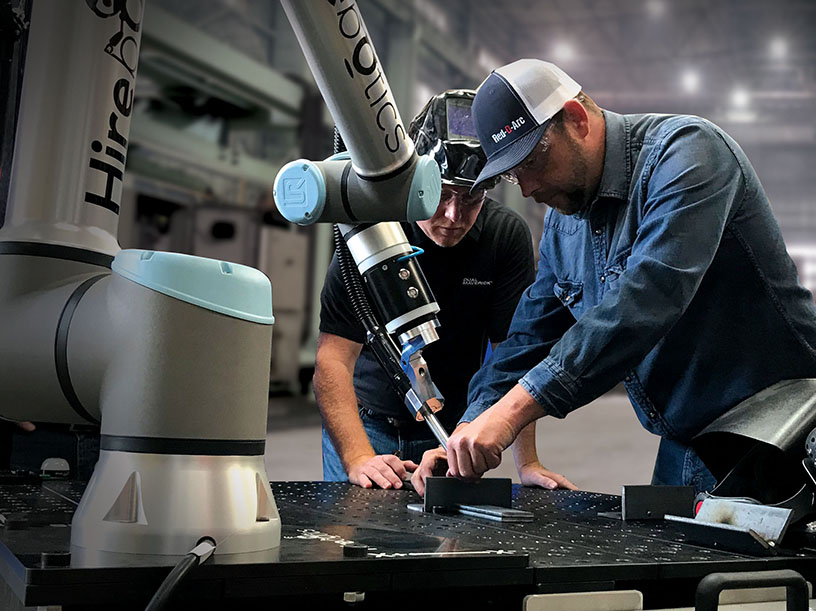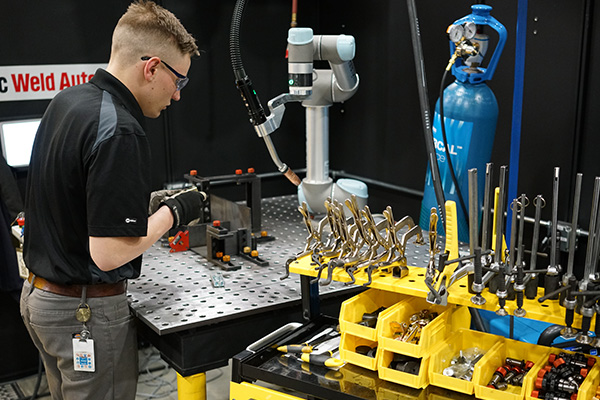Welding Rental for Beginners: Which Type of Welder Should I Rent?

Contents
With welding, as in many things, having the right tools is crucial. As a beginning welder, the appropriate equipment varies depending on the type of welding work you plan to accomplish. There isn’t a one-size-fits-all option; the proper welder for working in a steel mill or auto shop is often out of place on a construction site or in your personal workshop at home. A welder rental provides the opportunity to find the best fit for your needs.
To put your best foot forward, take the time to learn about the different types of welding and the equipment involved. As a newcomer to the field, you can discover the important facts in the following welder rental FAQ resource.
Why Should You Use a Welder Rental Service?
When renting, you pay less upfront compared to purchasing the equipment. Instead, you pay on an as-needed basis, contingent on how much you use it. As you get more work orders, you may opt to buy welding equipment to use indefinitely
Many new welders turn to a welder rental company initially for a number of reasons. Primarily, these have to do with the limited experience and capital that a new welder has compared to an expert.
First, when renting, you pay less upfront compared to purchasing the equipment. Instead, you pay on an as-needed basis, contingent on how much you use it. As you get more work orders, you may opt to buy welding equipment to use indefinitely; but when your capital is less certain, this makes for an excellent option.
With rentals, you typically don’t have to manage maintenance, repair costs and storage concerns. Again, this is significant when you have relatively little starting capital and limited workspace. Established businesses can still choose to rent additional equipment when unexpectedly large orders come.
Second, welder rental allows you to try some options before you buy. You have the opportunity to see how well a given welder performs for you before making a full investment. With the breadth of equipment available, this can grant you some peace of mind in your choice. This also lets you try out the newest gear from leading brands in the industry.
Finally, if you don’t weld full time, you have little reason to keep equipment in storage where it takes up space and potentially degrades from lack of use. Rent welders as needed, then return to your other services when you have completed the project.
How Should You Choose a Welder Rental Company?

While you can consult welding experts during welder rentals to get an idea of the right product for you, it also pays to understand the types of welding so you have a starting point for the options. Several primary types of welding see use in the field, each with its own characteristics and strengths. Review these welder rental FAQ choices:
Metal Inert Gas Welding
Also known as gas metal arc welding, MIG welding stands out as one of the most common and simplest forms of welding in use today. In broad terms, arc welding joins two different parent metals by way of an arc formed between them and an electrode, heating the parent metals at the joint.
MIG welding uses a wire electrode fed continuously from a spool as filler material to form the joint. The welder uses either a solid or cored wire electrode to feed steadily or spray in small molten droplets depending on the strength of the current. To protect the heated metals from reacting with atmospheric gases, a gas nozzle directs inert shielding gas — typically argon — over the weld zone.
MIG welding is versatile, fast and cost-efficient. While it doesn’t deliver the highest-quality welds possible, for most purposes, it produces robust joints and preserves the integrity of the parent metals. The process works best on carbon steel, stainless steel and aluminum and sees extensive use in pipe welding and the automotive industry.
Tungsten Inert Gas Welding
TIG welding has much in common with MIG welding as another form of arc welding. The crucial difference is in the nature of the electrode. Instead of a wire electrode that melts as part of the welding process, a pointed tungsten electrode forms one end of the arc. Tungsten has a high melting point, so the electrode does not burn away during use. Instead, a separate welding rod introduced into the arc by hand supplies the filler material for the weld.
The fine-tipped tungsten electrode enables high precision during welding and thus a higher-quality joint, especially for pieces with smaller dimensions. However, the process is slow compared to MIG welding, and achieving ideal accuracy requires specialized training and a practiced hand.
Like MIG welding, the automotive industry makes frequent use of TIG welding, generally wherever the project requires higher precision. TIG welding’s precision also makes it useful for applications where a clean visual appearance is as important as a strong joining, so artists can make good use of it once they have the experience to handle the equipment well.
Stick Welding
Stick welding, also called shielded metal arc welding, is among the earliest forms of arc welding in history, originating with the invention of coated electrodes in the early 20th century. The technique for using consumable metal electrodes was already in use, but the addition of a flux coating — initially clay or lime — produced a more stable arc and a cleaner weld than that attained with unshielded electrodes.
As the stick electrode melts under the arc, the flux coating produces a gas cloud and slag layer that shields the welding zone from atmospheric gases, preventing them from reacting with the molten metal. This replaces the inert gas used in MIG and TIG welding and eliminates the need for an external gas supply.
As a result, the equipment used for stick welding is more compact and portable, and the wind cannot blow away the shielding slag while outdoors. Changing electrodes in between welds is also straightforward since you don’t need a specialized device for feeding in stick electrodes.
One downside to stick welding involves the need to clean off the slag residue over the weld afterward, slowing the process. Additionally, effective execution requires fine control over current settings, angle of travel and arc length. Each of these needs adjustment for the materials used.
Finally, stick welding performs poorly for more reactive metals such as titanium. However, the portability of the equipment makes it valuable for field repairs and construction work. While not the most suited for a beginner, this portability —combined with the inexpensive equipment and lack of need for a gas supply —becomes useful once you have some experience in welding.
Flux-Cored Welding

Flux-cored arc welding bears several similarities to both MIG welding and stick welding. Like MIG welding, the automatic or semi-automatic process uses a wire electrode fed into the weld zone. Like stick welding, it makes use of flux to shield the weld zone.
In this case, the electrode has a flux core that produces shielding gases and slag to protect the weld rather than a core of solid metal. Although not required, the welder may supply additional shielding gas, typically pure CO2 or an argon-CO2 mix. Flux-cored arc welding works best with carbon steels, cast iron and stainless steels but is less preferable for some nonferrous metals such as aluminum.
FCAW shares some advantages and limitations with stick welding. The flux core mitigates the need for shielding gas, provides additional portability and allows outdoor welding on a construction site. At the same time, the melting flux can produce noxious smoke that obstructs the weld and necessitates safety equipment.
One major difference between flux-cored and stick welding is that the former does not demand fine manual dexterity as much as the latter and does not require replacing electrodes as frequently.
Where Should You Start With Welder Rentals?
The welder rental FAQ that remains, then, is what type of welder you should rent first. Keep in mind you aren’t as locked into your choice as you would be purchasing welding equipment, so you shouldn’t agonize about making the wrong choice.
In fact, welder rental is a good way to test equipment and see how it works for you. That said, consider your experience with welding and how ready you are to learn and potentially make mistakes in the process. Also, consider your budget and your goals for welding:
- If your main concern is practicing the manual dexterity needed for welding, MIG welding and flux-cored arc welding are good choices.
- If you have limited capital to put toward renting a welder at this point, stick welding and flux-cored arc welding don’t require the purchase of shielding gas. Between the two, stick welding is more affordable since it requires less equipment and uses more economical electrodes.
- If you want to perform welding in an industrial workspace, MIG and TIG welding are typically best suited for this type of work. For outdoor projects, stick and flux-cored welding provide appropriate choices. TIG welding also works best for welding art creations since it produces cleaner welds.
Whatever welding equipment you require, Red-D-Arc has a wide inventory of welder rental options to peruse, as well as experts ready to address any welder rental FAQ you may have. Contact us today if you’re ready to start welding.

Red-D-Arc Welderentals™ an Airgas company rents and leases welders, welding positioners, welding-related equipment, and electric power generators – anywhere in the world. Our rental welders, positioners and specialty products have been engineered and built to provide Extreme-Duty™ performance and reliability in even the harshest environments, and are available through over 70 Red-D-Arc Service Centers, strategically located throughout the United States, Canada, the United Kingdom, France, and the Netherlands, as well as through strategic alliances in the Middle East, Spain, Italy, Croatia, and the Caribbean. From our rental fleet of over 60,000 welders, 3,700 weld positioners, and 3,700 electric-power generators, we can supply you with the equipment you need – where you need it – when you need it.



